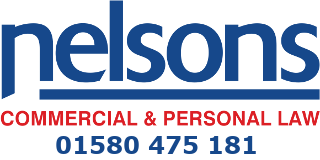What are the main differences between freehold and leasehold properties?
A lease has a limited life (from 1 to 1000 years) and on expiry may not be renewable. A freehold interest in property, on the other hand, is unlimited in duration.
A leaseholder will have to pay rent: either a nominal ground rent or a full market (“rack”) rent. A residential lease should only involve paying a nominal rent – sometimes, “a peppercorn, if demanded” (ie: nothing). Many leasehold properties also involve paying a service charge.
If you own a freehold property, you are in sole control of it (subject to statutory obligations, such as those that apply to listed buildings and tenanted properties). If you are a tenant of a leasehold property, you only have a right to occupy it on the terms set out in the lease. The lease is designed to protect the landlord’s interests and will cover every aspect of your occupation.
For instance –
- A freehold owner can (within limits) choose whether, when and how to maintain and decorate their property; a tenant will be obliged constantly to maintain the property, to redecorate at fixed intervals and often to comply with a defined colour scheme.
- Subject to planning permission and Building Regulations, a freeholder can make alterations to their property; a leaseholder will need the landlord’s consent for all but very minor work, and this consent may be refused or subject to stringent conditions.
- A freeholder can arrange their own insurance for whatever sum they consider appropriate (subject to any mortgage lender’s requirements); a leaseholder’s landlord will usually insure the property as they see fit and charge the cost to the tenant.
- A freeholder can sell the property whenever they choose; a leaseholder often needs his or her landlord’s permission
What special problems affect leasehold properties?
There are “fashions” in leases – as the law develops and as different situations are experienced, the general view as to what lease provisions are appropriate changes. This means that a lease that was perfectly in order a few years ago might be considered defective now – and a lease that is in acceptable form now might be considered defective in a few years. Checking the lease provisions against individual mortgage lenders’ specific changing requirements is one of the factors that makes leasehold conveyancing more expensive than for freeholds. In cases where the lease is “unfashionable”, either the lease needs to be updated (which can be expensive, and means that the landlord needs to be persuaded to agree) or, if appropriate, indemnity insurance cover can be arranged; usually, this is for a single, one-off premium – though if the level of cover under the policy needs increasing to reflect increases in property values, a top-up premium will be payable.
Often, a major problem with leasehold properties is that of the absent or uninterested landlord. If the landlord has no great interest in the property and cannot make money out of its management, he will be disinclined to keep it in good condition.
An extreme example of the uninterested landlord is where the landlord was a company that is now no longer in existence. Depending on the precise circumstances, it may be possible for the tenants’ company still to buy the freehold – from the landlord’s liquidator or from the Crown, for instance
The opposite problem is that of the predatory landlord – who sees his ownership of the freehold as a money-making opportunity. A landlord’s ability to charge what he likes for repairs, services and management has been severely restricted by a series of Acts of Parliament, but there is still ample scope for conflict
Whether the landlord is uninterested or predatory, the best solution is usually for at least half the tenants to form a company to buy the freehold (at a fair price) from the landlord, if necessary by exercising their statutory rights to do so.
When is a lease “too short”?
Most mortgage lenders will refuse to lend on the security of leases with less than 70 years to run – different lenders have different requirements, but the 70-year period is a good rule of thumb.
In appropriate circumstances, a leaseholder can obtain an extension (by 90 years) of the lease by exercising statutory rights or by negotiation (which is often quicker and cheaper)
When is a lease “too long”?
Unlike for commercial premises, a residential lease can never be too long, unless it contains onerous provisions. It is not unusual, and certainly not a drawback, for a lease to be for 999 years – or even longer!



